This question is related to another question I posted here on the new Reverse Engineering site.
I'm working with a small public transit agency on a neat open-source project that will help us to offer realtime data to local developers. A key piece of data we need is the current bus route a given vehicle is on. Currently, there is only a single electronic system that knows this information: the vehicle logic unit (VLU) that each vehicle is equipped with.
When a bus driver begins a route, they type its ID number into the keypad on the operator control unit (OCU). This ID number is sent to the VLU, which then displays the appropriate text on the LED signs on the bus.
On the OCU, there are two DB9F ports. In the manual, they are described as "J1708 PORTS". One of them is connected to the VLU, and the other one is available for me to plug in to. Connecting to it gets me some data that you can read about in my other question.
Essentially, I'm questioning whether my computer is even properly hooked up to the OCU. Currently, I'm just running a plain old 6ft Straight Through Serial Cable (DB9 M/F) between my computer's serial port and either of the "J1708 PORTS". I can consistently get the same data this way, but I'm beginning to doubt that the data is being properly... transmitted?
I am now fairly certain that I'm using the wrong cable or something. Here's a diagram of the cable that is running between the OCU and the VLU: J1708.png
Do I need a similar cable to connect the OCU to my computer? If so, why is it still sending me non-random data when I use a plain old straight through DB9 cable?
